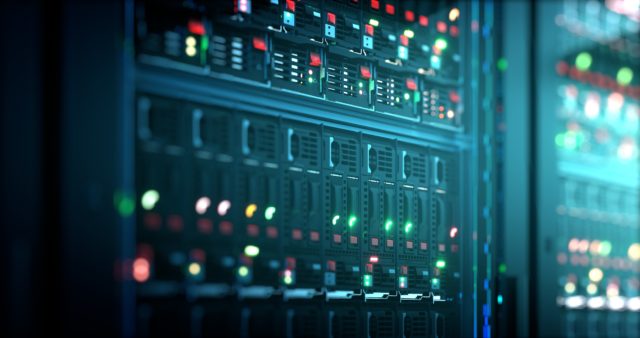In today’s digital and interconnected world, the data center is crucial for modern business operations. Keeping it at peak performance isn’t merely about maximizing profit—it’s crucial for maintaining competitiveness in today’s marketplace.
Understanding Data Center Essentials
A data center plays a critical role in storing, processing, and distributing data, rendering it an indispensable asset for any organization in today’s business sphere. Here’s a brief look at the fundamental elements of a data center:
- Definition And Role. A data center serves as the business core, supplying vital processing power and storage capabilities.
- Key Components. These include servers for processing, storage systems for data retention, and the network infrastructure that integrates all components.
- Infrastructure. The layout and configuration of a data center, including its physical setup and systems arrangement, are paramount to ensuring streamlined activity.
Given these essential elements, it’s clear why a cyber first data centre is a key principle. This approach underscores the importance of cybersecurity in all aspects of data center operations, advocating for the integration of robust security measures into all data center functions.
Once these fundamental aspects are understood, and security-focused strategies are integrated, the complexities of data center management can be tackled more effectively. The next step is applying best practices in managing and maximizing these facilities.
Best Practices For Managing And Optimizing Data Centers
In the quest to elevate data center functionality, there are several key strategies that should be considered. They span multiple aspects, from resource allocation to disaster recovery planning. Here are some key strategies for managing and maximizing data centers:
- Strengthening Security: The Initial Barrier
In the face of rising cybersecurity challenges, a preemptive security strategy becomes the backbone of data center protection. This involves setting up advanced firewalls, deploying proactive intrusion detection systems, and maintaining stringent physical security protocols.
Moreover, conducting regular security assessments is critical for uncovering potential vulnerabilities and evaluating the effectiveness of existing security safeguards, thus ensuring that the data center remains fortified against potential threats.
- Promoting Efficiency Through Intelligent Resource Management
It includes careful monitoring and control of resource utilization, optimizing usage, and reallocating assets to accommodate shifting demands, leading to a noticeable improvement in data center performance.
- Preparing For The Unexpected: Effective Disaster Recovery
Resilience against catastrophes hinges on a comprehensive disaster recovery plan. This includes data backup strategies, well-documented recovery procedures for both internal processes and external services, and regular testing of these strategies.
- Sustaining Continuity: Leveraging System Redundancy
Ensuring uninterrupted processing demands robust backup systems and redundancy protocols. These protective measures help ensure continuous processing and minimize functional downtime during system outages.
- Balancing Tasks: Streamlined Workload Management
Through careful planning, productive workload distribution can balance system loads, thereby boosting operational productivity. This can be achieved through mechanisms like load balancing, task prioritization, and strategic workload scheduling to minimize peak-time congestion.
- The Importance Of Regular Maintenance
Consistent upkeep is a preventive measure against unanticipated system failures. Regular audits and updates for hardware, software, and network components keep the data center machinery running smoothly and efficiently.
- Predicting Future Needs: The Role Of Capacity Planning
Imagine being able to accurately predict future demands and prepare your data center for expansion to fulfill those needs. Anticipating future needs is pivotal in preparing data centers for growth. Predictive tools that analyze trends and model future resource needs can provide invaluable insights for growth planning.
- Adopting A Green Approach: Promoting Energy Efficiency
Adopting environmentally conscious approaches, including reducing power consumption in data centers, has proven to be both practical and responsible. This can be accomplished by adopting energy-saving hardware, enhancing cooling systems for minimal energy waste, and leveraging power management software.
- Harnessing Automation For Greater Efficiency
Modern automation tools provide solutions for routine tasks including patch management, real-time system monitoring, along with incident response, serve as valuable resources in enhancing productivity in data center management.
- Striving For Excellence: Network Optimization
Successful networking, characterized by maximum performance and minimal latency, can significantly enhance data center functions. This can be achieved through strategies such as systematic routing protocols, efficient bandwidth management, and the use of advanced load balancing techniques, including adaptive load balancing algorithms.
- Building Successful Vendor Relationships
Cultivating fruitful partnerships with vendors involves choosing the right partners and fostering mutual cooperation. This includes performance evaluations, strategic contract negotiations, and proactive risk management.
- Investing In Skill Development: Staff Training And Development
Investing in the data center management team is of paramount importance. Regular upskilling sessions on emerging technologies and industry best practices equip the team to manage and enhance data center activities skillfully.
Each best practice uniquely contributes to data center management and optimization. However, they are all interconnected, with improvements in one area often leading to benefits in others. Now, let’s turn our attention to the ever-changing landscape of data center technologies and trends.
Conclusion: Looking Forward
Diving into these strategic approaches is the cornerstone of efficiently managing and enhancing your data center operations. Keep in mind that managing and enhancing your data center operations requires a continuous commitment to learning, adaptation, and improvement. It should be viewed not just as an assignment, but as a strategic initiative.








